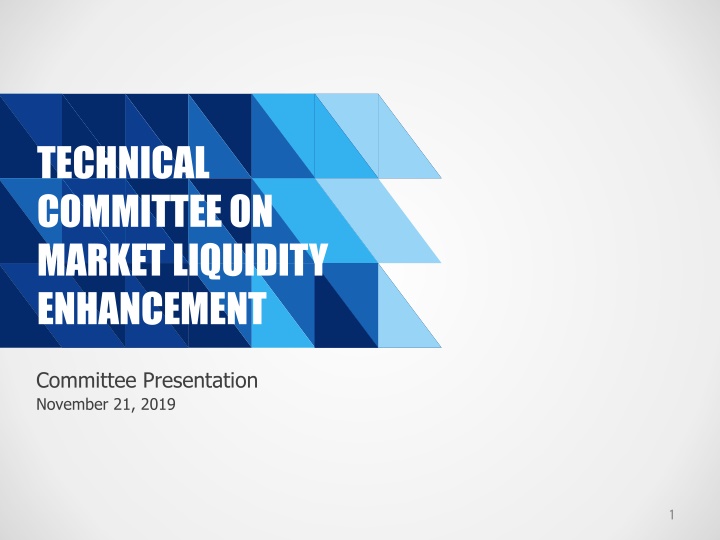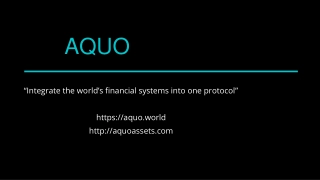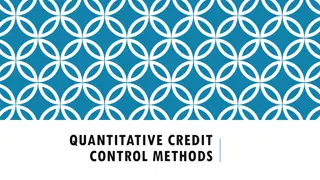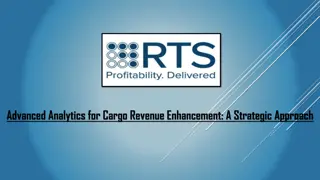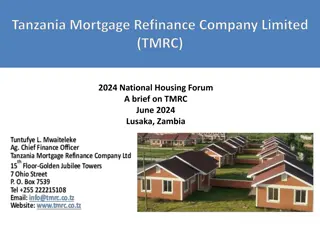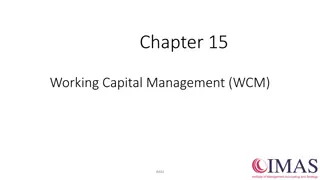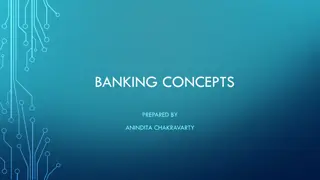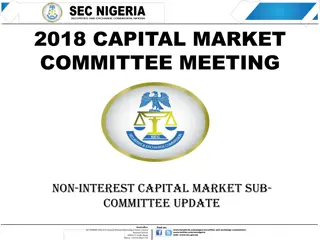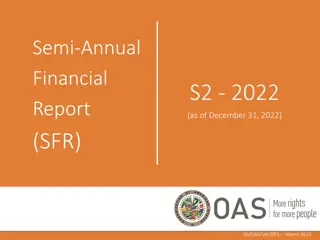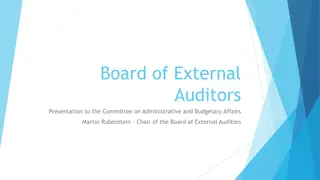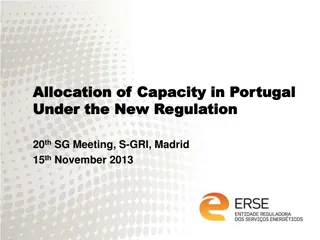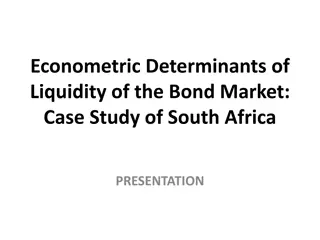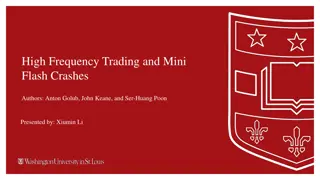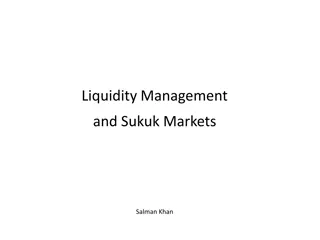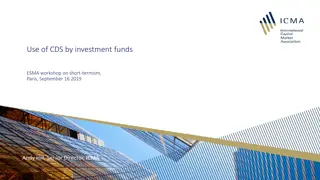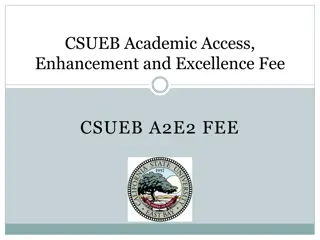Technical Committee on Market Liquidity Enhancement Presentation
The Technical Committee on Market Liquidity Enhancement aims to recommend actionable steps for implementing initiatives in the Nigerian capital market to enhance liquidity. The committee examines existing liquidity enhancement initiatives and develops a roadmap for market liquidity improvement based on the challenges identified.
Download Presentation

Please find below an Image/Link to download the presentation.
The content on the website is provided AS IS for your information and personal use only. It may not be sold, licensed, or shared on other websites without obtaining consent from the author.If you encounter any issues during the download, it is possible that the publisher has removed the file from their server.
You are allowed to download the files provided on this website for personal or commercial use, subject to the condition that they are used lawfully. All files are the property of their respective owners.
The content on the website is provided AS IS for your information and personal use only. It may not be sold, licensed, or shared on other websites without obtaining consent from the author.
E N D
Presentation Transcript
TECHNICAL COMMITTEE ON MARKET LIQUIDITY ENHANCEMENT Committee Presentation November 21, 2019 1
INTRODUCTION The overall objective of the committee is to recommend actionable steps to drive the implementation of initiatives in the Master Plan aimed at enhancing market liquidity, which is central to the consolidation of the gains from other ongoing initiatives in the Nigerian capital market In furtherance to this objective, the technical committee's activities are expected to be guided by the broad terms of reference enumerated below: Examine existing liquidity enhancement initiatives such as securities lending and market making to identify possible challenges and constraints; Develop a roadmap for the enhancement of liquidity in the market; and Undertake any other activity that may be relevant to the achievement of the mandate The Committee operated via two (2) main sub-committees with focus on equity and fixed income The Committee also invited and received presentation/recommendations from: Fund managers association of Nigeria on the liquidity challenges facing Collective Investment Schemes Stanbic IBTC on the challenges with the implementation of the NSE Securities Lending & Market Making Program The Committee has now consolidated the identified challenges, recommendations and solutions into a final report.
FUNDING: A CRITICAL TOOL FOR LIQUIDITY ENHANCEMENT Assets Liabilities? Capital Sources: NSE, DLM The rise (2004 - 2008) and crash (2008 - 2009) of the equities market, as indicated by the Nigerian All Share Index, coincides with the availability and withdrawal of funds via bank-based margin loans to Stockbrokers The failure of this product margin loans and its impact on the market provides robust evidence that funding liquidity drives market liquidity as predicted by several research reports (see Gromb and Vayanos (2002) and Brunnermeier and Pedersen (2009)) Capital Market Operators in Nigeria are endangered species as they face significant challenges in funding their businesses and their fixed income traders trade without real-time information. They are effectively side-lined to limited brokerage only with no real added value from a liquidity standpoint Liabilities are required to fund the institution s creation of assets; without this, their businesses will remain very small with very little, if any, impact on the economy 3
THE ROADMAP: RECOMMENDATION TO BOOST FUNDING LIQUIDITY The Malaysian Case Study Malaysia repealed the Securities Act 1983 (SIA) and the Futures Industry Act 1993 (FIA) and replaced them with The Capital Market and Services Act 2007 (CMSA) which introduced a single licensing regime for capital market intermediaries. Under this new regime, a capital market intermediary will only need one License (Capital Markets Services License) to carry on the business in any one or more regulated activities. This gave rise to stronger institutions; also meant less cost and paperwork for the intermediaries who carry on more than one regulated activity Enactment of CMSA 2007 A joint action of Bank Negra Malaysia and the Securities Commission licensed universal brokers who were subject to certain eligibility criteria. The move, which allowed qualified brokers to access the interbank market to both borrow and lend, was aimed towards enhancing the capacity and capabilities of domestic capital market intermediaries to contribute towards the development of a more resilient, competitive and dynamic financial system Universal Broker Licensing In the Nigerian Financial Markets today, only bank-based intermediation works efficiently. Market-based intermediation is much less efficient as operators, especially those of the capital markets, face significant challenges accessing wide sources of funding. They have very inefficient sales and trading operations and are unable to contribute meaningfully to the liquidity of the capital markets. Therefore, it is recommended that the SEC pursues granting qualified Capital Market Operators access to wholesale funding which is a sine qua non to diversifying intermediation channels 4
THE ROADMAP: CURRENT REFORMS Restructuring Equities Margin Trading Equities Market Making Equities Securities Lending Exchange-Traded Repurchase Agreement Promote Retail Participation via CIS Market Education / Investor Awareness The above contains some of the critical ongoing reforms in different segments of the Capital Market. These will ensure the survival of Capital Market Operators, boost liquidity in the short to medium term and crucially lay the foundation for qualified CMOs to take advantage of the primary recommendation of the report structural diversification of intermediation channels. 5
OPPORTUNITY FOR REGULATORY ADVOCACY While capital market stakeholders must work towards the advancement of the market, government regulations and policies remain crucial to the development of any market. We, therefore, recommend the SEC s advocacy / actions on the following items: Banks Reduction / Elimination of capital controls Effective Fiscal and Monetary Policy collaboration with Brokerage Firms for distribution Provision of Tax Incentives Privatisation of SOEs via Capital Raising Activities in the Public Market Promote Transparency & Comparability of CISs Clarify Pass- Through Status of CISs Improve Financial Market Integrity
